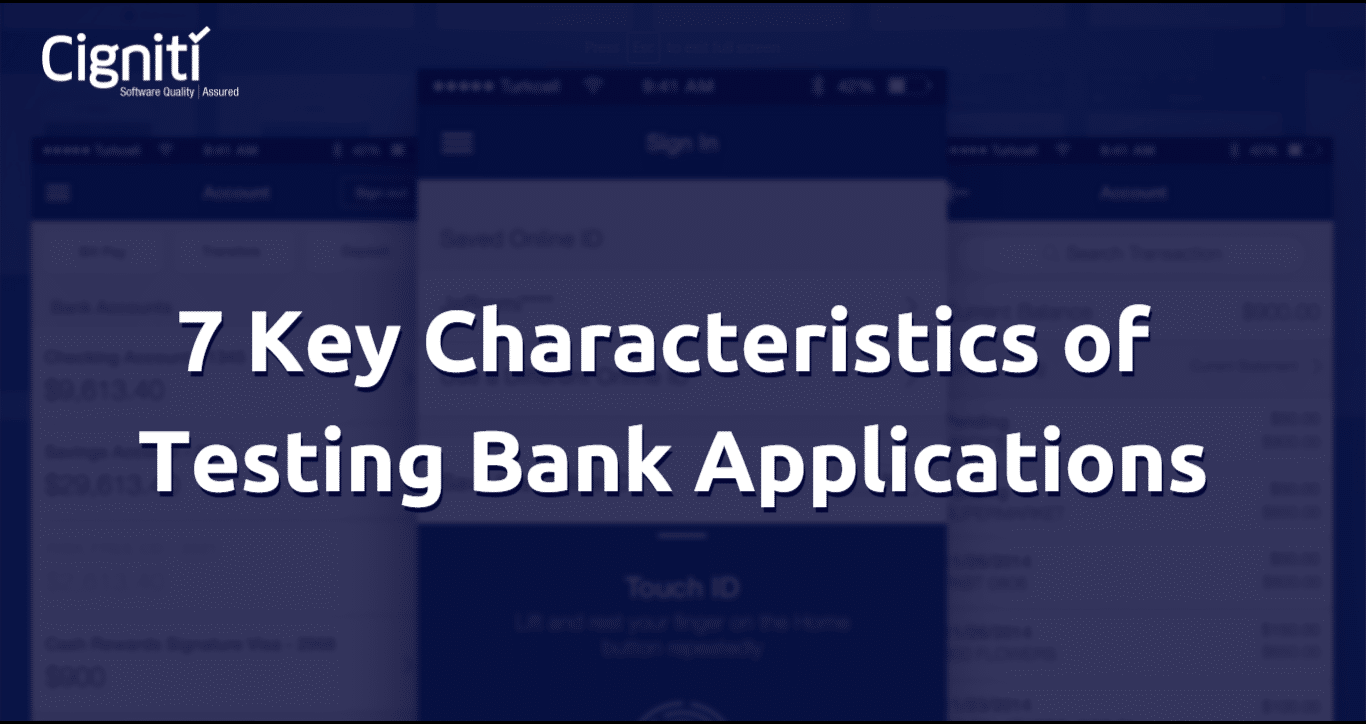Top 10 Mobile Testing Problems and How to Avoid Them
|
Listen on the go!
|
With an exponential rise in mobility and increased mCommerce, organisations are significantly spending time and money in mobilizing business processes. Mobility provides consumers an access to more and more data at their disposal to make decisions. It has led to increased expectations that have changed market dynamics of how we do business. Today we are witnessing more and more enterprises leveraging mobility to improve efficiencies, boost their top-lines, and venture into new business areas that penetrate the markets. In an ever evolving mobile apps market, it’s challenging to be successful as the users have a range of apps to choose from. They expect smooth running apps and they do not hesitate to uninstall the apps having any minor discrepancies. They move forward browsing for better apps which are readily available.
This makes testing apps even to the minutest of details very essential before release. While testing Mobile apps, the real time challenges faced by the organizations hinder successful performance of mobile testing. Unfortunately, according to experts, almost 18% companies state lack of time to test mobile apps, 65% say they do not have the right tools, and 52% cite lack of devices as reasons for not performing mobile testing.
Mobile apps coupled with a phenomenal growth of mobile technology and improved hardware over the last few years, has truly unleashed the potential of devices. Mobile apps and software is really driving the incredible success of tablets and smart phones in the application market. This spectacular rise of mobile software is also inevitably creating problems for developers, as they are continuously in a quest to produce apps efficiently and quickly for a diversified set of devices. QA departments are left playing catch-up with innovative methodologies like Agile and DevOps, as they endeavour to test apps properly before they are released into the market. Testing for mobile market is becoming challenging in an industry that’s constantly changing.
It brings forth some unique problems. Following are some of the pressing challenges in mobile app testing with possible solutions:
- Fragmentation: Wide range of mobile devices and operating systems propping up each and every day fancy the users who expect smooth running of mobile apps on any device anywhere. With Android alone, wherein one has to factor in multiple individual manufacturer UI’s, the possible permutations are intimidating. The following solutions may be useful in solving the issue:
- After identifying bugs and functional problems using emulators, one can move to test with real devices, and remotely accessed devices. This way of testing in real-world conditions helps in identifying security and network impact.
- Though there are thousands of different smart phones and tablets, only a handful dominate the sales charts. Identifying targeted audience helps to know the most popular devices in a given area. This helps focus on developing a great experience for them by avoiding working on incorporating unused features in mobile apps and testing the features being used more extensively.
- Networks: Network factor impacts the performance of a mobile app effecting user experience beyond hardware and software and it must be taken into consideration for testing the following scenarios:
- How does the app operate offline?
- Is the memory being impacted in unexpected ways? Or are there any constraints with particular chipsets?
- What is the impact of different Wi-Fi speeds, low signal strength, 3G or 4G networks?
- What happens when you switch to Wi-Fi or the network drops or vice versa?
- Security considerations include data encryption and multi-user support handling and also testing low-level resource usage and watching for buffering problems or garbage data generation is important.
- Tools: Mobile apps testing is still evolving, so the tools available are limited when compared to traditional testing. It is important to know where to focus your resources as a prerequisite for getting the best out of them. By investigating demographic popularity can extract more value from testing. As a first step, investigating the product and its intended use, and then targeting the most important devices would bring out successful result. If it’s a mass market app then analyzing which device has the biggest market share and focussing on the OS version would work out for greatest market penetration.
- UX: Companies often want to fit as much information as in a desktop application into mobile apps. This approach of the companies leads to less friendly apps in spite of UX testing and generates a dislike from the user due to lack of readability. Users using different screen sizes may not be able to display all the data consistently. Deciding on only the required inputs that need to be included in app screens helps avoiding stuffing of information.
- Different Mobile App Types: Apps based on the three different mobile app architectures – Native, Web, and Hybrid –have different test case scenarios for each. They differ significantly in performance, stress, and compatibility testing. Native and hybrid apps need be tested for successful execution, download, platform interaction, and update behaviour. Web-only apps depend more on browser choice and its versions of which all instances must be tested. However, all types of apps are subject to other mobile testing challenges as well. A common solution to avoid complexity of supporting multiple app architectures is to eliminate at least one or both of the alternatives.
- International use of applications: Many apps are developed for international markets. It’s essential to ensure that every update is made accurately in all the languages the app supports. The biggest problem is fitting the content for languages like German where nouns or verbs are too long and the scripts like Arabic that go right-to-left. They create a serious screen diversity problem for developers and testers. The regional traits, time zones, and target audiences must be taken into account.
- Applying Test Automation: Mobile testing automation is typically rewarding for frequent, repetitive, data-driven tests requiring minimal human intervention and is relatively insensitive to code changes. If the automation tests chosen can scale up easily as the platform diversity expands, they can be managed by less skilled testers. It helps in re-deploying skilled resources to higher-value test roles. But there are trade-offs between coverage and efficiency during various development and test phases when applying test automation. It should be observed that early development functional and UI testing benefits more from frameworks that let developers emulate devices and facilitate their unit testing. Automation at later development phases can be selectively applied to achieve the highest ROI.
- Fast release cycles of mobile applications: Today’s market has shrunken timelines to release the applications reducing the available time for testing and fitting in ample time needed for effective testing before releases is a challenge. An effective solution can be achieving seamless collaboration amongst teams across the application lifecycle by adopting Agile and DevOps practices in an organization. It helps in meeting the demand of shrunken life cycles ensuring proper testing and flawless continuity in the delivery cycle.
- Security Issues Apps and devices on a public cloud have more security issues than on a private cloud. A secure private cloud can provide the required access to testing teams, thus avoiding data breaches. Another solution would be testing early and testing often, thus enhancing usability and identifying security issues early and fixing them before they cause any substantial harm to the system.
- Automated Testing of Layouts: This involves comparing the output with expected results by loading pages and images in renderer. It is beyond layout and rendering and includes Pixel level test for image positioning & rendering. The challenge is that the test should be targeting smallest possible code feature or fragment. Layout test works across browsers and devices applications and hence visual and rendering responsiveness testing should be one of the key testing considerations.
Device and platform diversity, short release cycles, lack of mature testing tools, and a variety of network connectivity requirements create a compelling need for an end-to-end flawless mobile application testing solution. Cigniti’s mobile app testing solutions speed up release of mobile apps by helping to overcome testing challenges that add bottlenecks to the development and deployment of apps.
To know more about how Cigniti can help you take advantage of Mobile testing, write to contact@cigniti.com.





Comment (1)
Thank you for sharing the information with us. All the scenarios are compiled well and are very informative. I would also like to suggest the mobile app testing tools provided by pCloudy. Their tools are comprehensive and are effective. I tested my apps, could identify bugs easily with their tools and even fix it in minutes. This is helpful for all the mobile app developers to test their apps .